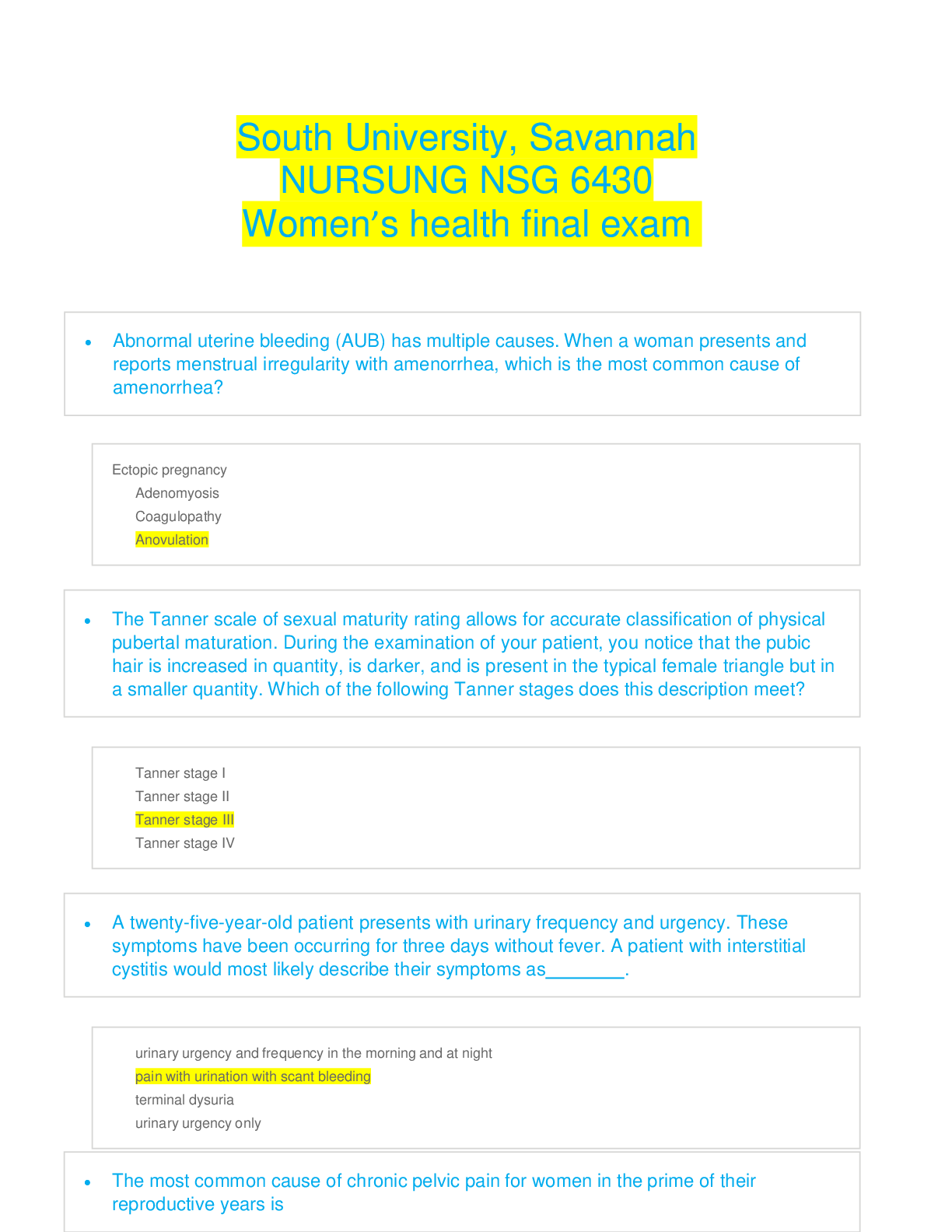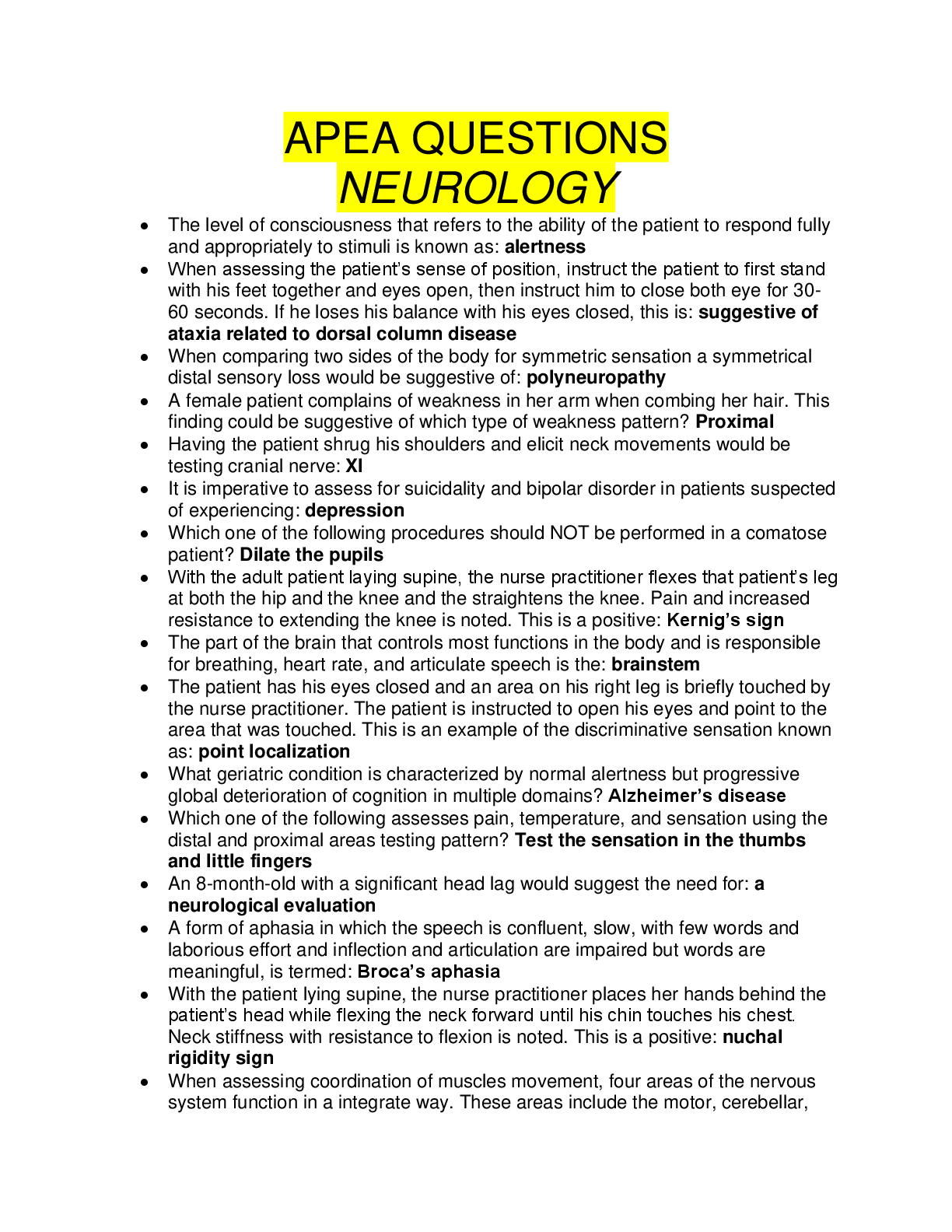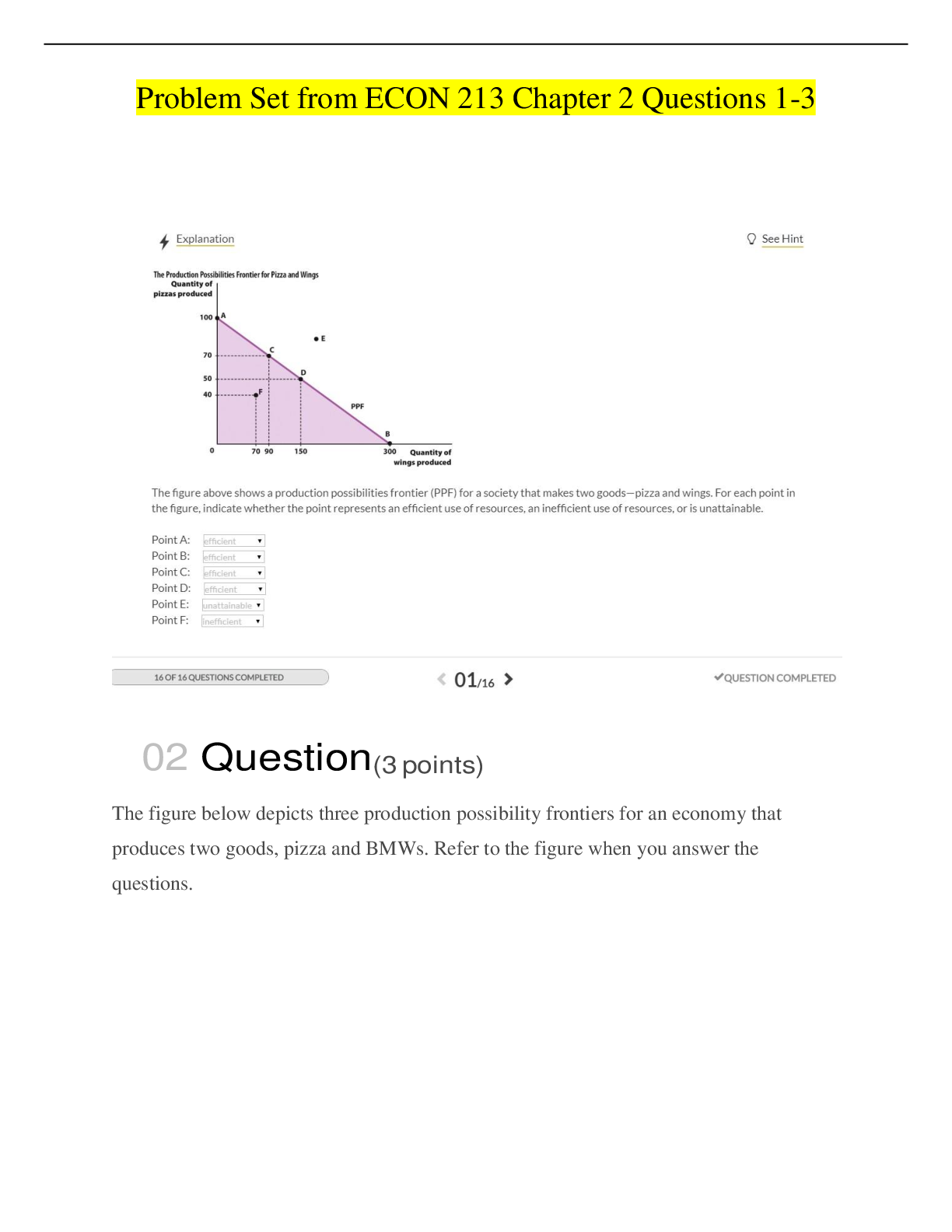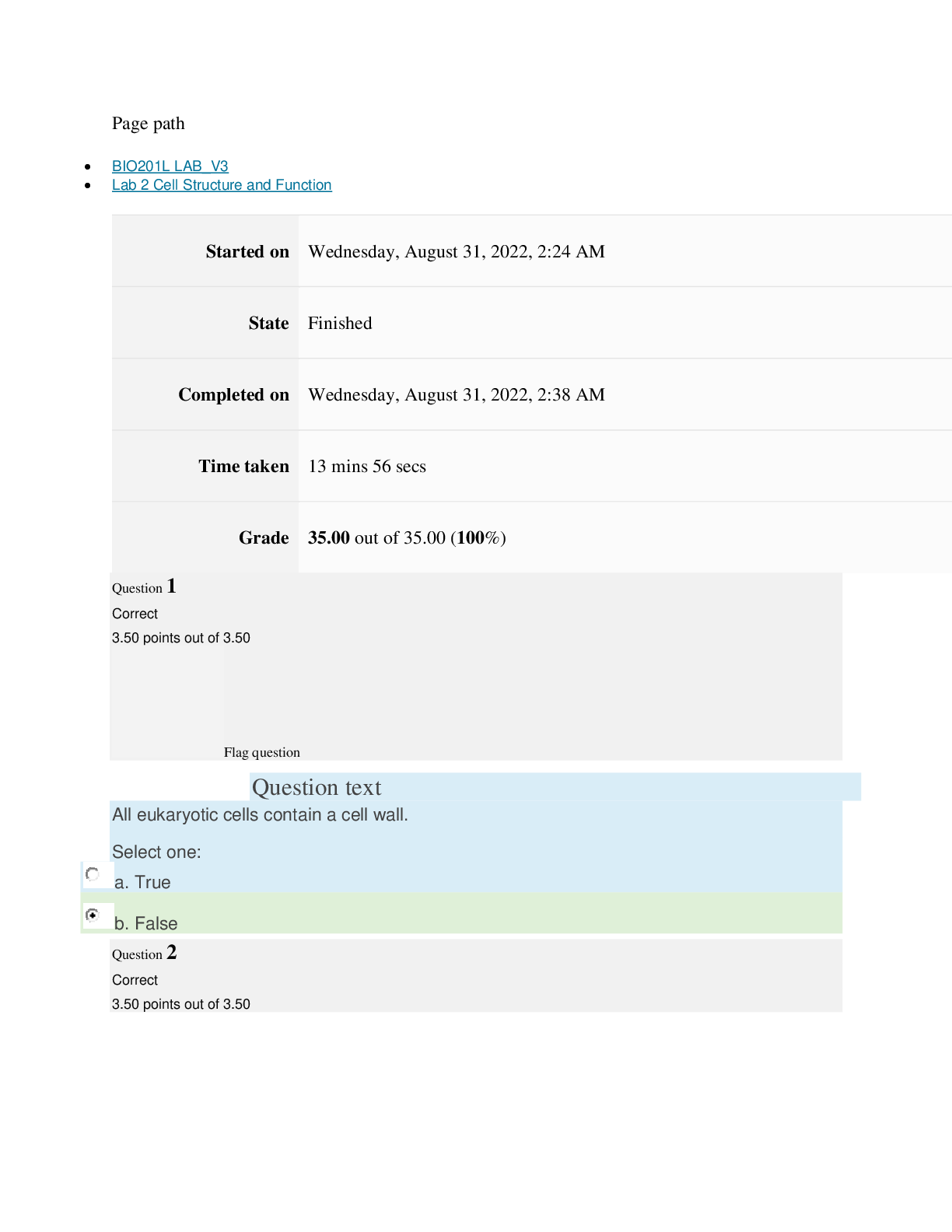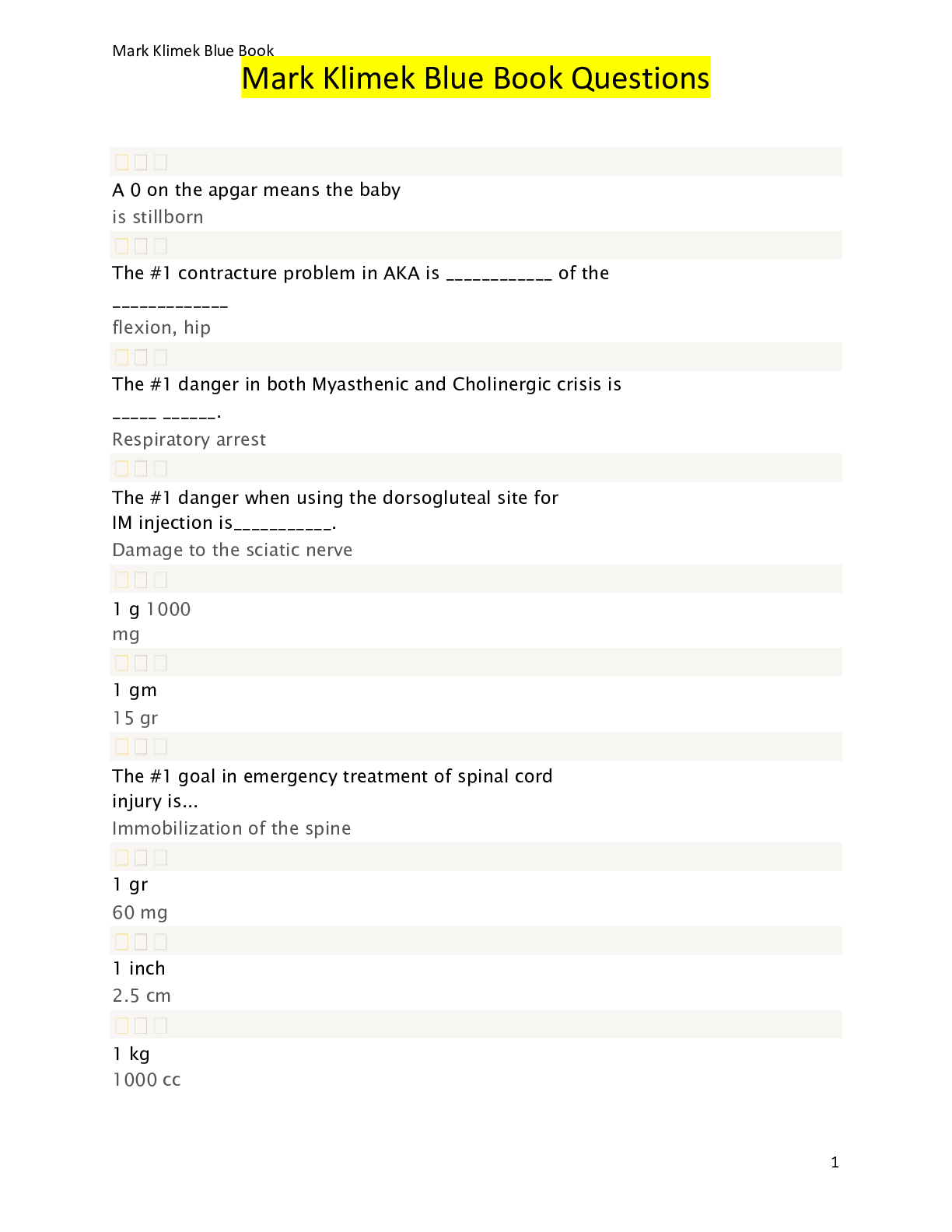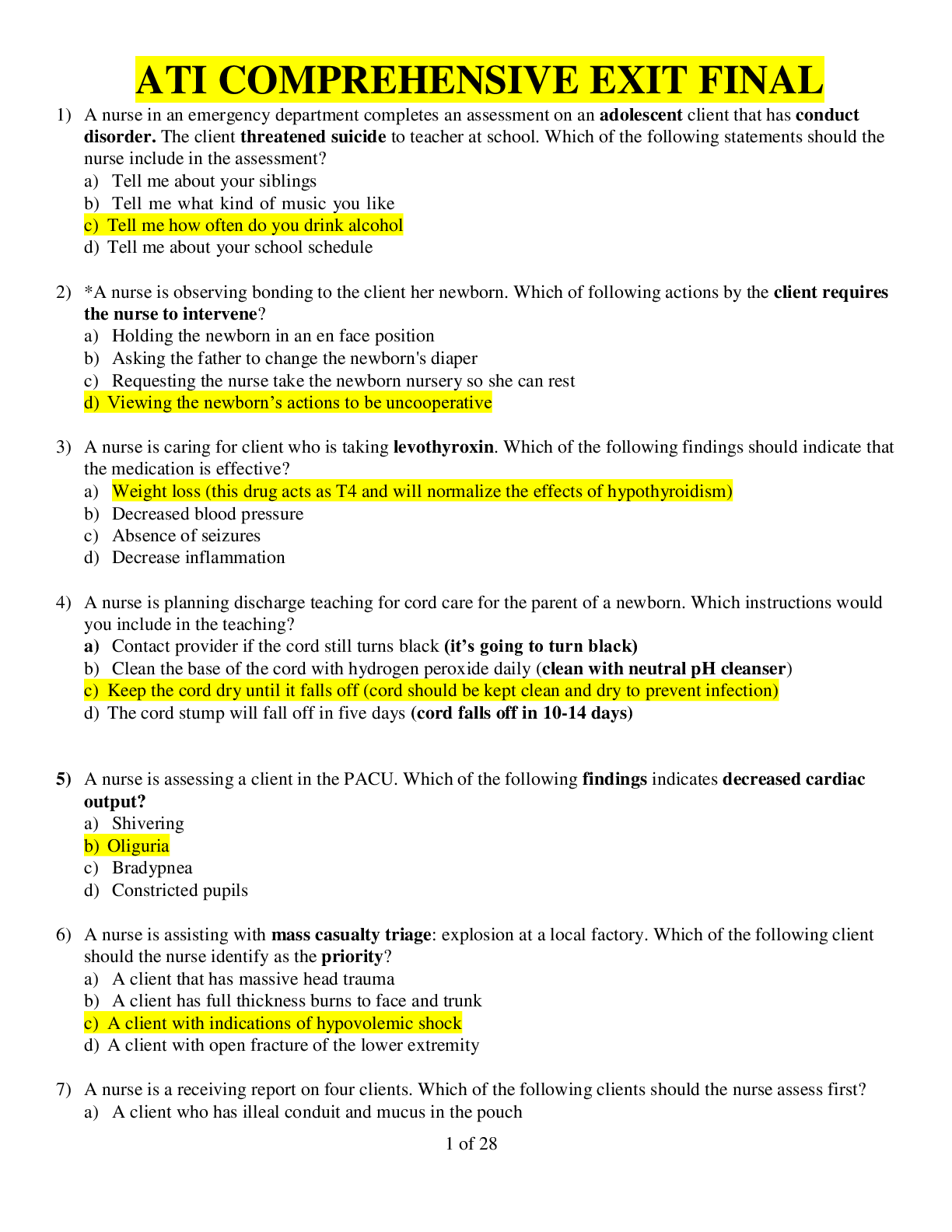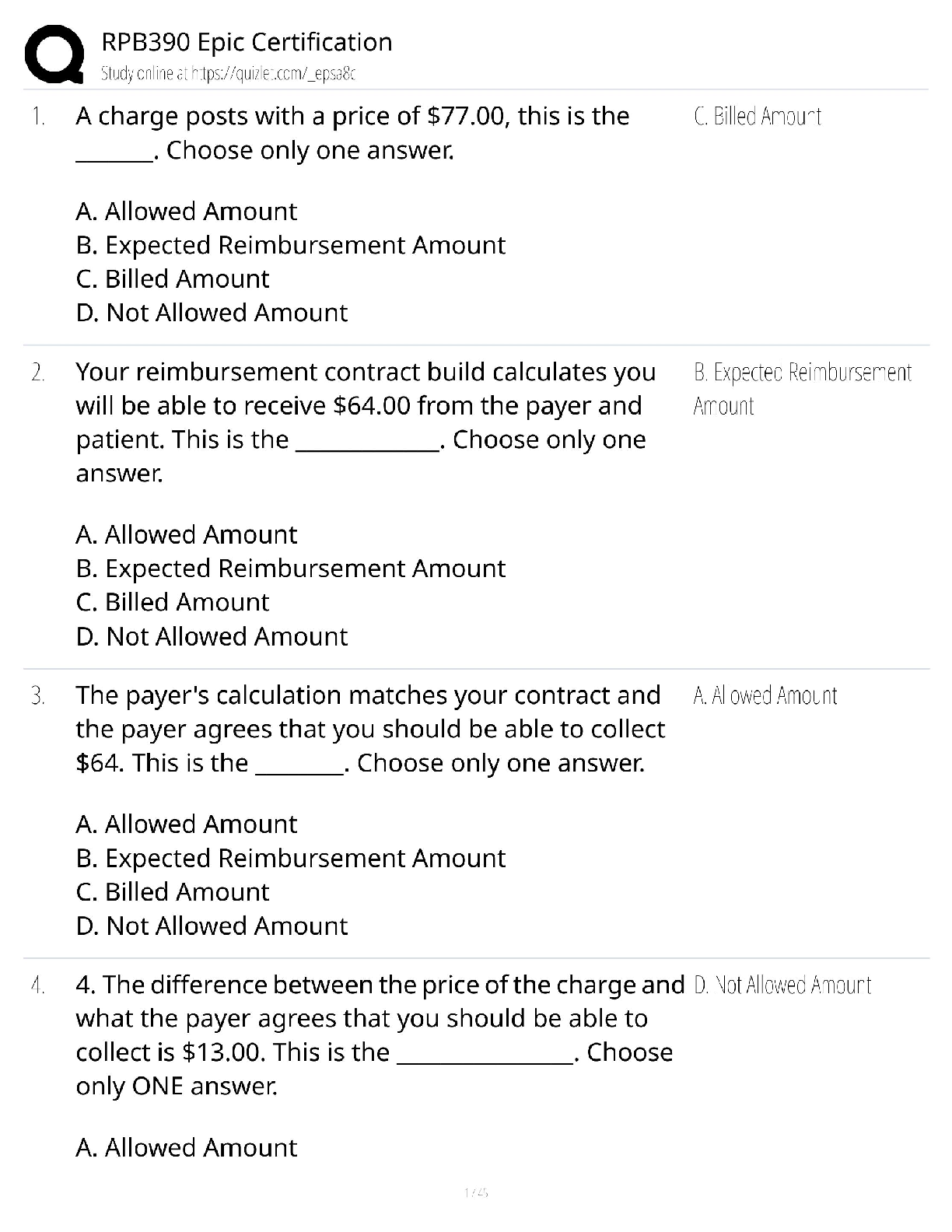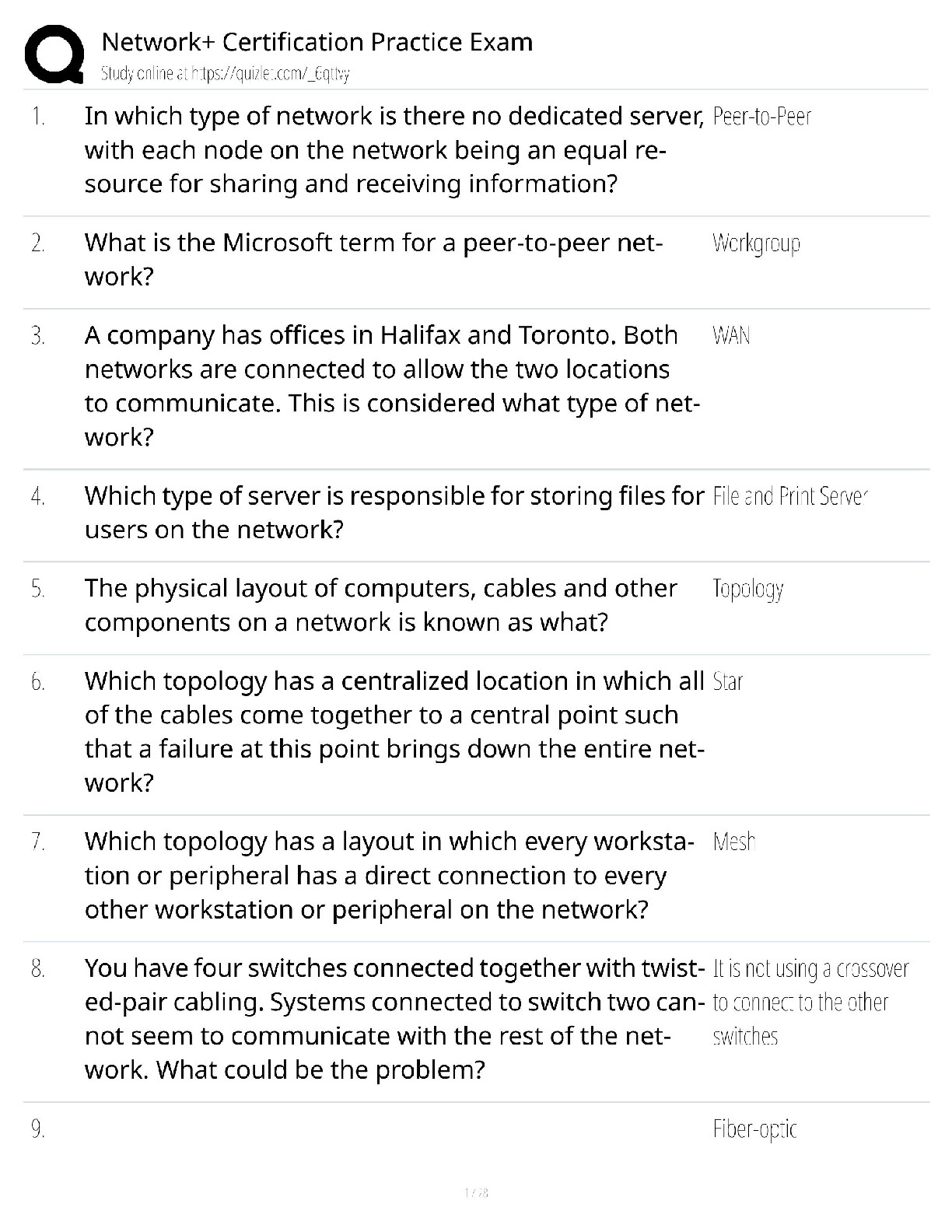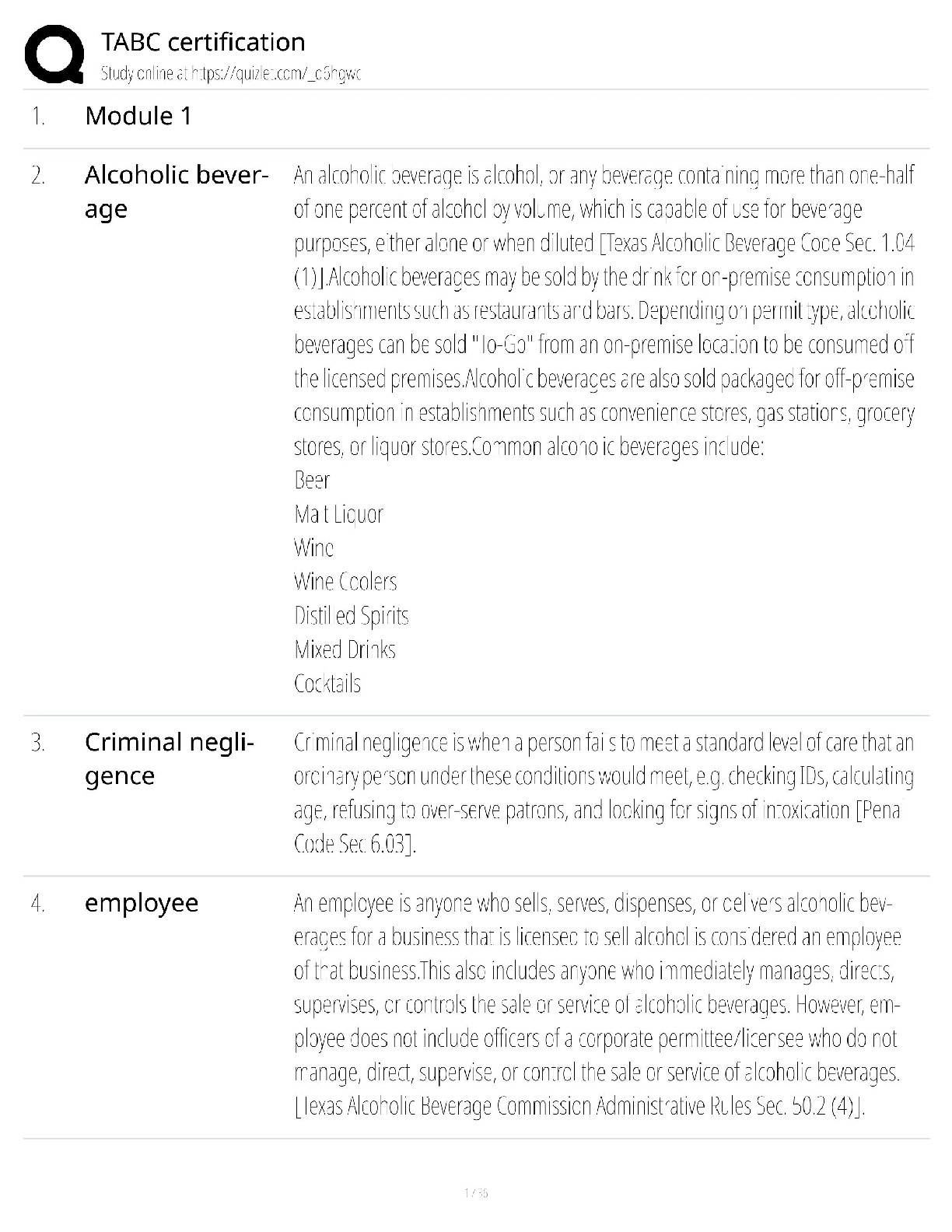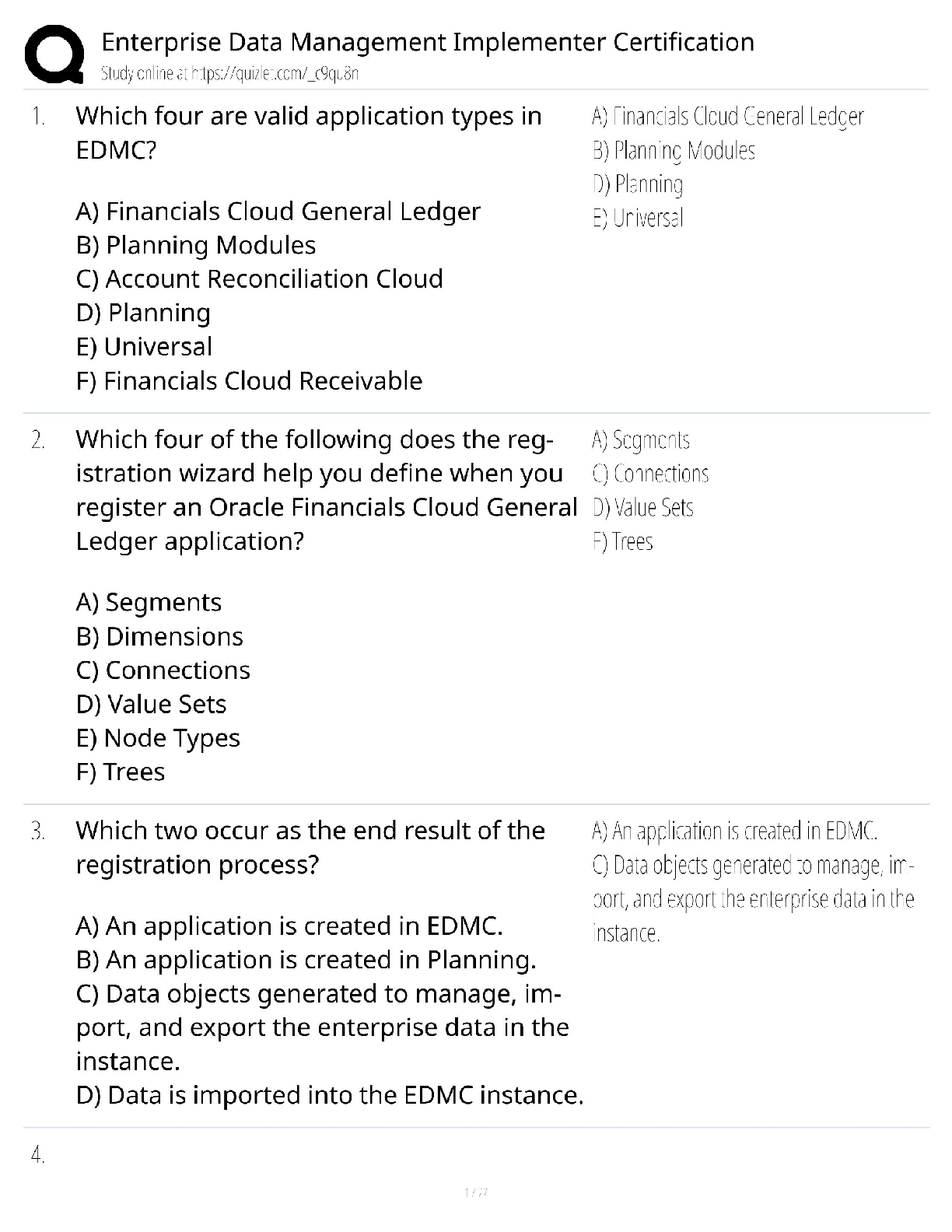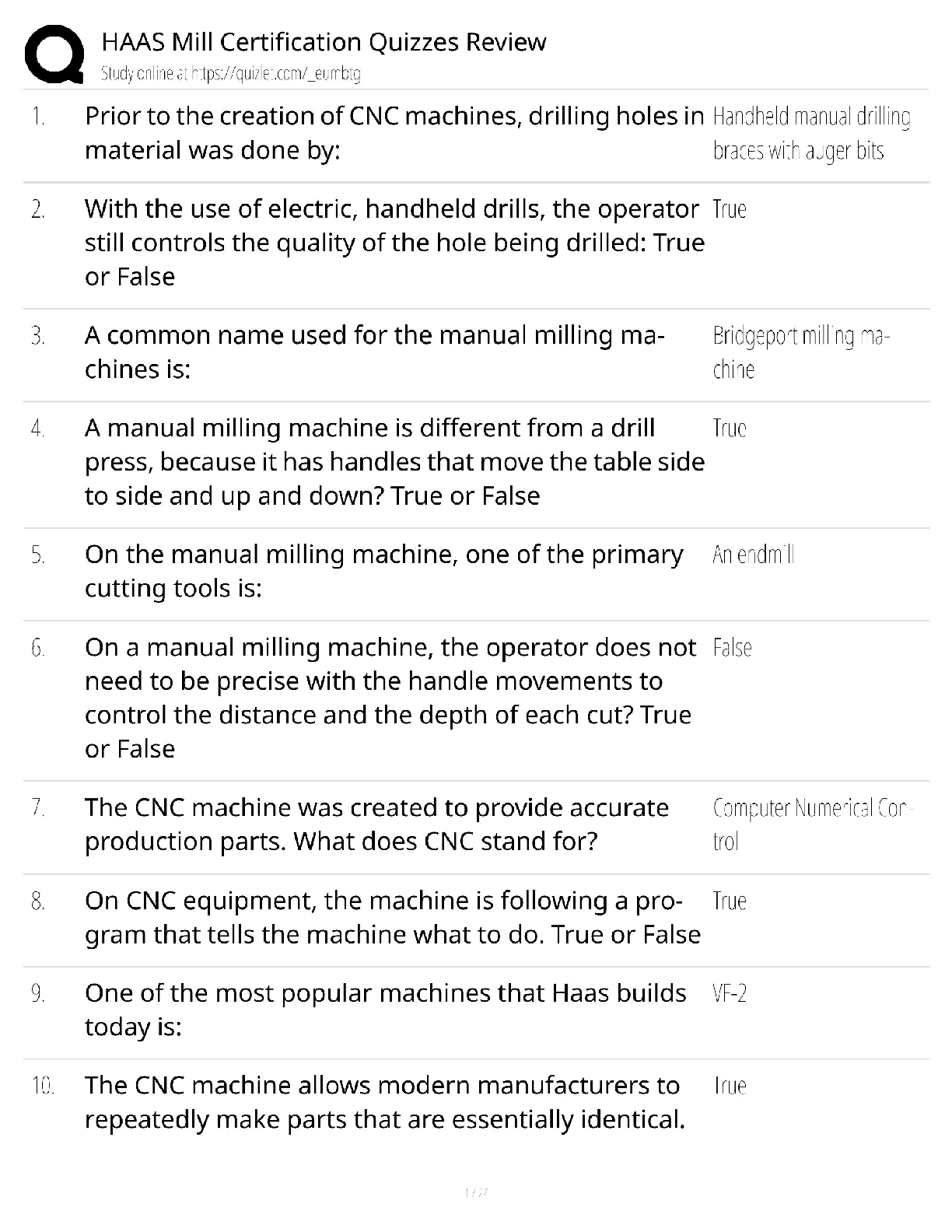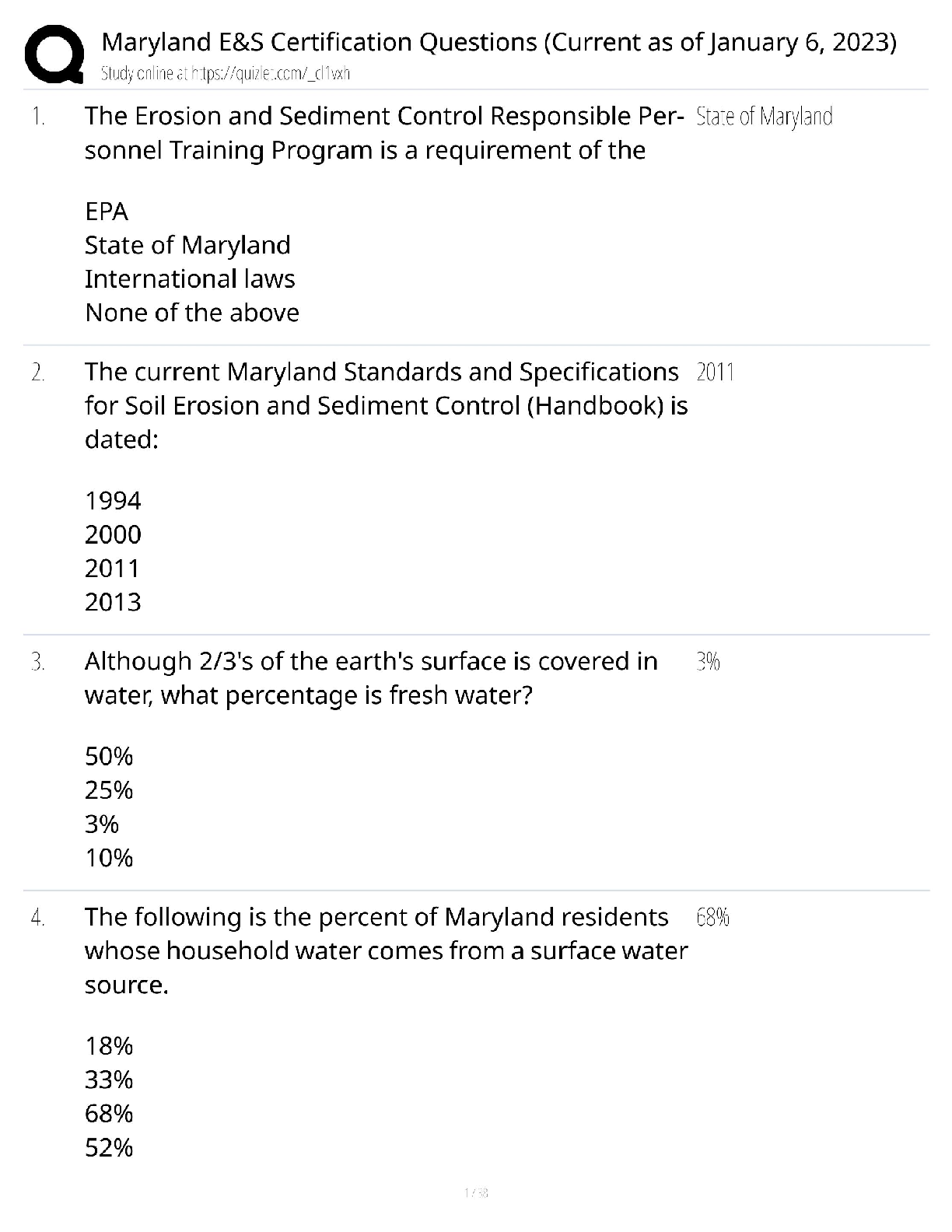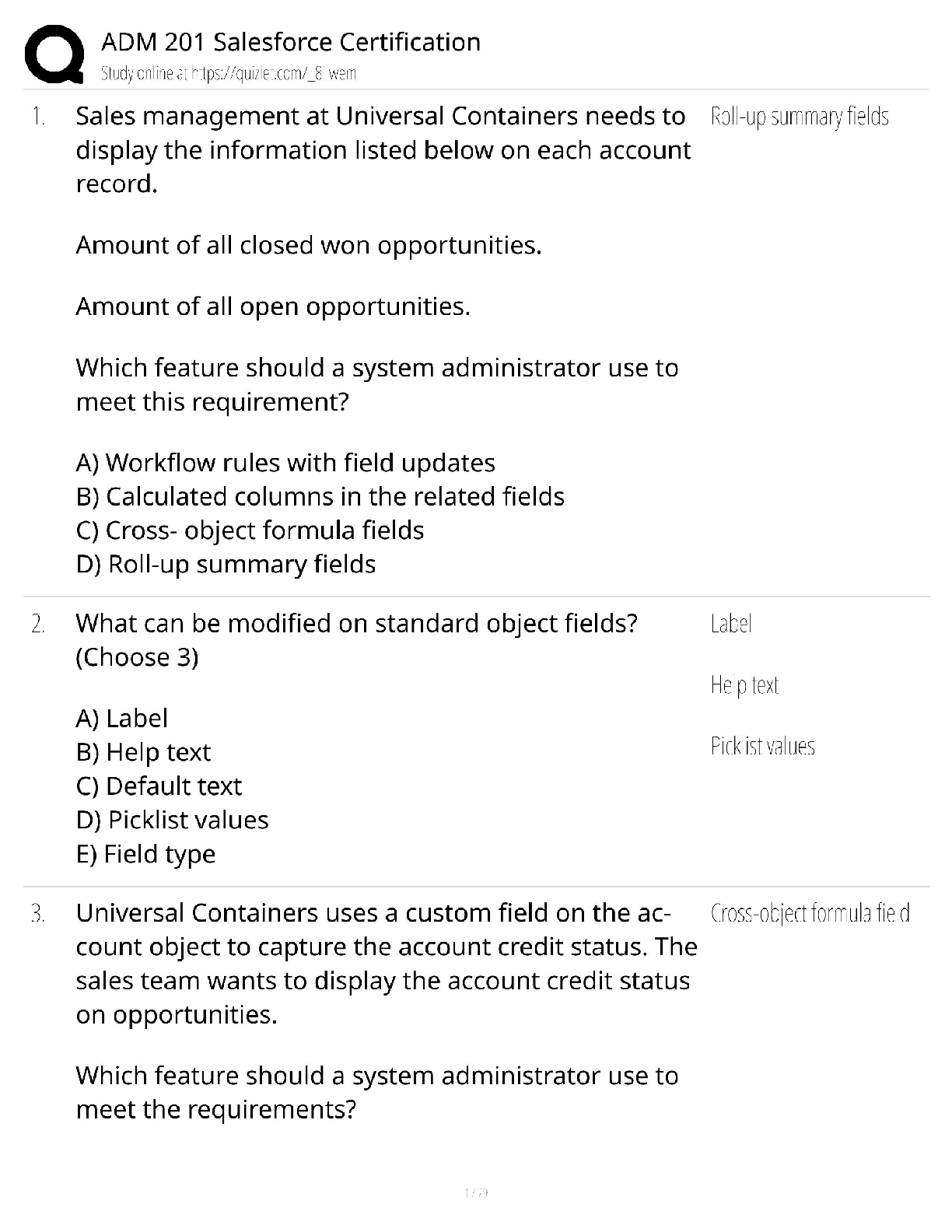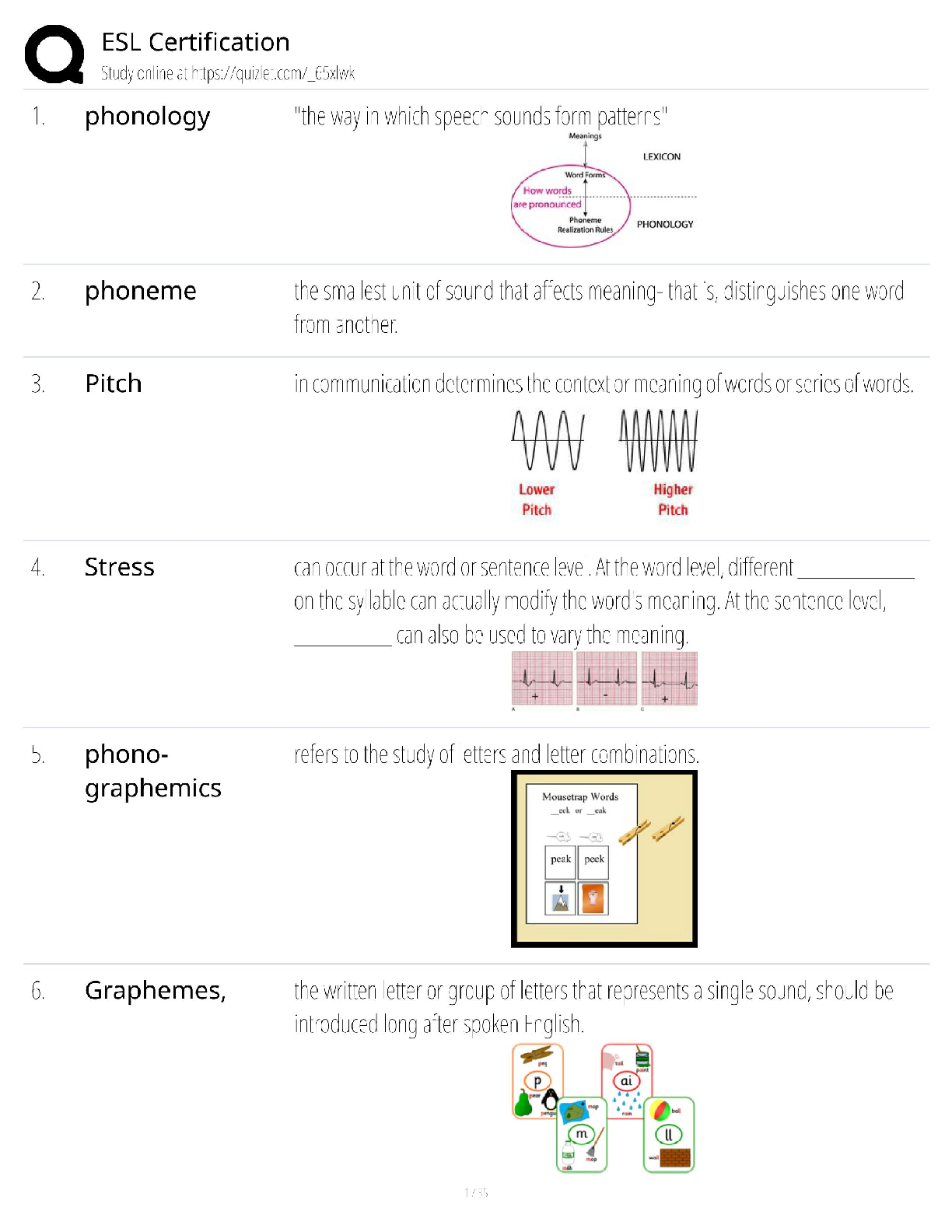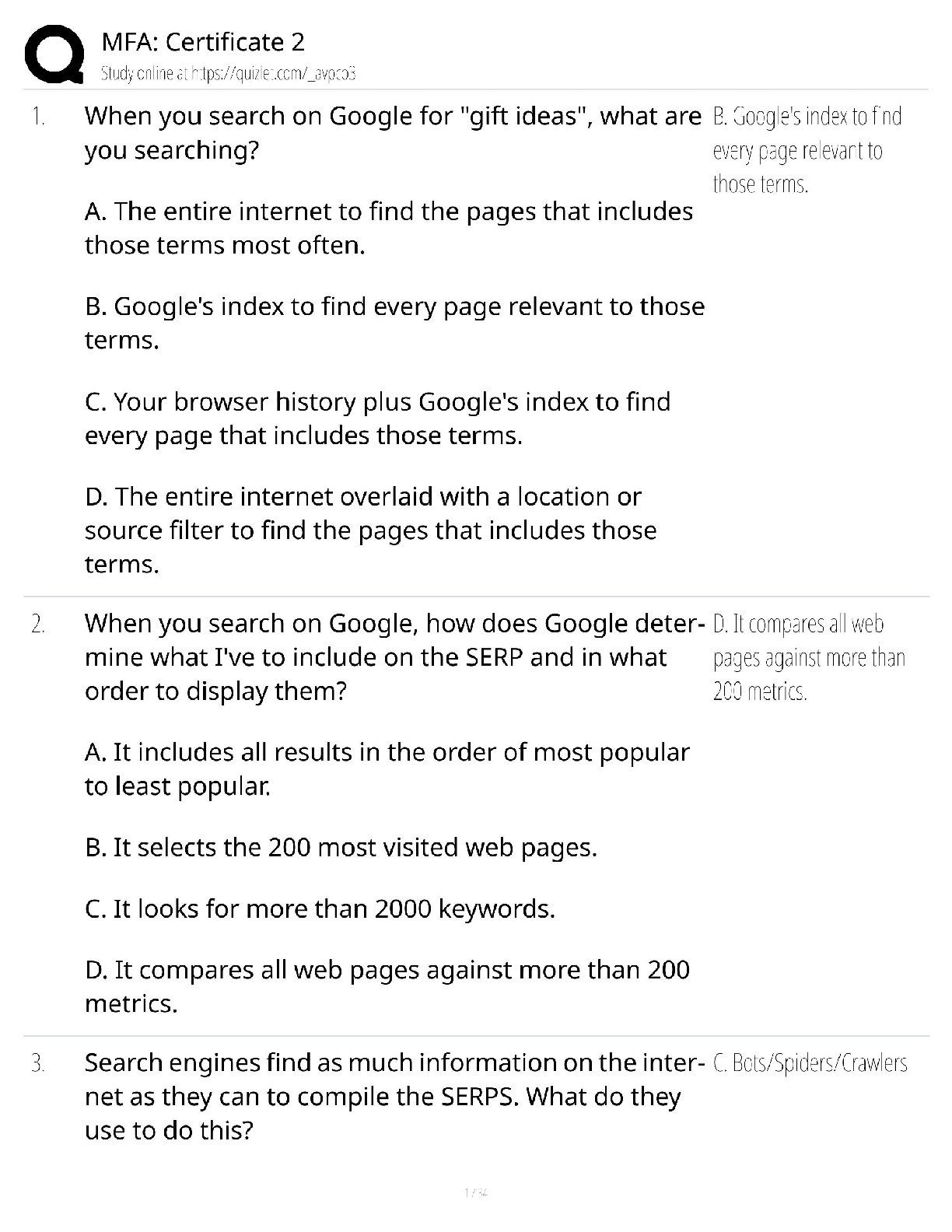*NURSING > QUESTIONS & ANSWERS > Nova Southeastern University > PAC 5310 > Nova Southeastern University PAC 5310. Chapter 29 Manageme (All)
Nova Southeastern University > PAC 5310 > Nova Southeastern University PAC 5310. Chapter 29 Management of Patients With Complications from Heart Disease (ALL CORRECT ANSWERS WITH RATIONALE)
Document Content and Description Below
Question 1 See full question A nurse is caring for a client with heart failure. The nurse knows that the client has left-sided heart failure when he makes which statement? Question 2 See full qu ... estion In a client with chronic bronchitis, which sign would lead the nurse to suspect right-sided heart failure? Question 3 See full question A patient is prescribed digitalis preparations. Which of the following conditions should the nurse closely monitor when caring for the patient? Question 4 See full question Which of the following medications is categorized as a loop diuretic? Question 5 See full question A patient with acute pericarditis is exhibiting distended jugular veins, tachycardia, tachypnea, bradycardia, and muffled heart sounds. The senior nursing student recognizes these symptoms occur when Question 6 See full question Which of the following would be inconsistent as a lifestyle change directive for the patient diagnosed with heart failure? Question 7 See full question Which of the following therapies are for patient who have advanced heart failure (HF) after all other therapies have failed? Question 8 See full question Which of the following is a classic sign of cardiogenic shock? Question 9 See full question The nurse is gathering data from a client recently admitted to the hospital. The nurse asks the client about experiencing orthopnea. What question would the nurse ask to obtain this information? Question 10 See full question A patient arrives at the ED with an exacerbation of left-sided heart failure and complains of shortness of breath. Which of the following is the priority nursing intervention? • Question 1 See full question • Chapter 29: Management of Patients With Complications from Heart Disease - Page 798-799 Question 2 See full question When the nurse observes that the patient has increased difficulty breathing when lying flat, the nurse records that the patient is demonstrating Question 3 See full question You are caring for a client with suspected right-sided heart failure. What would you know that clients with suspected right-sided heart failure may experience? Question 4 See full question A patient is exhibiting digitalis toxicity. Which of the following medications would the nurse expect to be ordered for this patient? Question 5 See full question The student nurse is caring for a client with heart failure. Diuretics have been ordered. What method might be used with a debilitated patient to help the nurse evaluate the client'’s response to diuretics? Question 6 See full question Which of the following is the hallmark of systolic heart failure? Question 7 See full question The nurse recognizes which of the following lab tests is a key diagnostic indicator of heart failure? Question 8 See full question The nurse recognizes which of the following symptoms as a classic sign of cardiogenic shock? Question 9 See full question The nurse hears the alarm sound on the telemetry monitor and observes a flat line. The patient is found unresponsive, without a pulse, and no respiratory effort. What is the first action by the nurse? Question 10 See full question Which of the following is the primary cause of pulmonary or peripheral congestion? Question 1 See full question A client with stage IV heart failure has a living will indicating that he doesn't want to be placed on a ventilator. A nurse is caring for this client when he begins experiencing severe dyspnea. The nurse should: Question 2 See full question The nursing instructor is discussing heart failure with their clinical group. The instructor talks about heart failure in terms of a decreasing ejection fraction of the heart. What diagnostic test is used to measure the ejection fraction of the heart? Question 3 See full question A patient with acute pericarditis is exhibiting distended jugular veins, tachycardia, tachypnea, bradycardia, and muffled heart sounds. The senior nursing student recognizes these symptoms occur when Question 4 See full question Frequently, what is the earliest symptom of left-sided heart failure? Question 5 See full question You are working in a long-term care facility with a group of older adults with cardiac disorders. Why would it be important for you to closely monitor an older adult receiving digitalis preparations for cardiac disorders? Question 6 See full question A client with chronic heart failure is able to continue with his regular physical activity and does not have any limitations as to what he can do. According to the New York Heart Association (NYHA), what classification of chronic heart failure does this client have? Question 7 See full question A client develops cardiogenic pulmonary edema and is extremely apprehensive. What medication can the nurse administer with physician orders that will relieve anxiety and slow respiratory rate? Question 8 See full question The nurse identifies which of the following symptoms as a characteristic of right-sided heart failure? Question 9 See full question The nurse identifies which of the following symptoms as a manifestation of right-sided heart failure (HF)? Question 10 See full question The nurse does an assessment on a patient who is admitted with a diagnosis of right-sided heart failure. The nurse knows that a significant sign is which of the following? Correct response: Pitting edema Explanation: The presence of pitting edema is a significant sign of right-sided heart failure because it indicates fluid retention of about 10 lbs. Sodium and water are retained because reduced cardiac output causes a compensatory neurohormonal response. Question 1 See full question A physician in the outpatient department examines a client with chronic heart failure to investigate recent-onset peripheral edema and increased shortness of breath. Physical findings include bilateral crackles, a third heart sound (S3), distended neck veins, elevated blood pressure, and pitting edema of the ankles. The nurse documents the severity of pitting edema as +1. What is the best description of this type of edema? Question 2 See full question A nurse is caring for a client with heart failure. The nurse knows that the client has left-sided heart failure when he makes which statement? Question 3 See full question A client is in the early stage of heart failure. During this time, which compensatory mechanism occurs? Question 4 See full question A patient is prescribed digitalis preparations. Which of the following conditions should the nurse closely monitor when caring for the patient? Question 5 See full question Which is a potassium-sparing diuretic used in the treatment of heart failure? Question 6 See full question A patient has been diagnosed with systolic heart failure. The nurse would expect the patient’s ejection fraction to be at which level? Question 7 See full question Which of the following medications is a human brain natriuretic peptide (BNP) preparation? Question 8 See full question The nurse is caring for a client with heart failure. What procedure should the nurse prepare the client for in order to determine the ejection fraction to measure the efficiency of the heart as a pump? Question 9 See full question A patient is prescribed digitalis preparations. Which of the following conditions should the nurse closely monitor when caring for the patient? Question 10 See full question A patient has been experiencing increasing shortness of breath and fatigue. The physician has ordered a diagnostic test in order to determine what type of heart failure the patient is having. What diagnostic test does the nurse anticipate being ordered? Question 1 See full question A client with left-sided heart failure complains of increasing shortness of breath and is agitated and coughing up pink-tinged, foamy sputum. The nurse should recognize these findings as signs and symptoms of: Question 2 See full question A nurse is caring for a client experiencing dyspnea, dependent edema, hepatomegaly, crackles, and jugular vein distention. What condition should the nurse suspect? Question 3 See full question The patient with cardiac failure is taught to report which of the following symptoms to the physician or clinic immediately? Question 4 See full question Which New York Heart Association classification of heart failure has a poor prognosis and includes symptoms of cardiac insufficiency at rest? Question 5 See full question The clinical manifestations of cardiogenic shock reflect the pathophysiology of heart failure (HF). By applying this correlation, the nurse notes that the degree of shock is proportional to which of the following? Question 6 See full question A 73-year-old client has been admitted to the cardiac step-down unit where you practice nursing. After diagnostics, she was brought to your unit with acute pulmonary edema. Which of the following symptoms would you expect to find during your assessment? Question 7 See full question Ronald is a 46-year-old who has developed congestive heart failure. He has to learn to adapt his Question 8 See full question Which of the following nursing interventions should a nurse perform when a patient with valvular disorder of the heart has a heart rate less than 60 beats/min before administering beta blockers? Question 9 See full question A nurse is assessing a patient with congestive heart failure for jugular vein distension (JVD). Which of the following observations is important to report to the physician? Question 10 See full question What is the primary underlying disorder of pulmonary edema? Question 1 See full question A nurse is assessing a client with heart failure. The breath sounds commonly auscultated in clients with heart failure are: Question 2 See full question A client is returning from the operating room after inguinal hernia repair. The nurse notes that he has fluid volume excess from the operation and is at risk for left-sided heart failure. Which sign or symptom indicates left-sided heart failure? Question 3 See full question A nurse is administering lanoxin, which she knows increases contractility as well as cardiac output. Contractility refers to which of the following? Question 4 See full question You are caring for a client with suspected right-sided heart failure. What would you know that clients with suspected right-sided heart failure may experience? Question 5 See full question A client with chronic heart failure is able to continue with his regular physical activity and does not have any limitations as to what he can do. According to the New York Heart Association (NYHA), what classification of chronic heart failure does this client have? Question 6 See full question A client has a myocardial infarction in the left ventricle and develops crackles bilaterally; 3-pillow orthopnea; an S3 heart sound; and a cough with pink, frothy sputum. The nurse obtains a pulse oximetry reading of 88%. What do these signs and symptoms indicate for this client? Question 7 See full question Which of the following is the hallmark of systolic heart failure? Question 8 See full question The nurse identifies which of the following symptoms as a manifestation of right-sided heart failure (HF)? Question 9 See full question A nurse is teaching patients newly diagnosed with coronary heart disease (CHD) about their disease process and risk factors for heart failure. Which of the following problems can cause left-sided heart failure (HF)? Question 10 See full question The diagnosis of heart failure is usually confirmed by which of the following? Question 1 See full question A nurse in the emergency department is caring for a client with acute heart failure. Which laboratory value is most important for the nurse to check before administering medications to treat heart failure? Question 2 See full question Which of the following is a cerebrovascular manifestation of heart failure? Question 3 See full question The nurse is discussing cardiac hemodynamics with a nursing student. The nurse explains preload to the student and then asks the student what nursing interventions might cause decreased preload. The student correctly answers which of the following? Question 4 See full question The nursing instructor is discussing heart failure with their clinical group. The instructor talks about heart failure in terms of a decreasing ejection fraction of the heart. What diagnostic test is used to measure the ejection fraction of the heart? Question 5 See full question Which of the following therapies are for patient who have advanced heart failure (HF) after all other therapies have failed? Question 6 See full question Which of the following is a classic sign of cardiogenic shock? Question 7 See full question Frequently, what is the earliest symptom of left-sided heart failure? Question 8 See full question A client develops cardiogenic pulmonary edema and is extremely apprehensive. What medication can the nurse administer with physician orders that will relieve anxiety and slow respiratory rate? Question 9 See full question The nurse recognizes which of the following symptoms as a classic sign of cardiogenic shock? Question 10 See full question A patient arrives at the ED with an exacerbation of left-sided heart failure and complains of shortness of breath. Which of the following is the priority nursing intervention? Question 1 See full question Which pulse should the nurse palpate during rapid assessment of an unconscious adult? Question 2 See full question A client is receiving captopril (Capoten) for heart failure. The nurse should notify the physician that the medication therapy is ineffective if an assessment reveals: Question 3 See full question A nurse has come upon an unresponsive, pulseless victim. She has placed a 911 call and begins CPR. The nurse understands that if the patient has not been defibrillated within which time frame, the chance of survival is close to zero? Question 4 See full question The nurse is obtaining data on an older adult client. What finding may indicate to the nurse the early symptom of heart failure? Question 5 See full question A patient is admitted to the intensive care unit (ICU) with left-sided heart failure. What clinical manifestations does the nurse anticipate finding when performing an assessment? (Select all that apply.) The nurse is discussing cardiac hemodynamics with a nursing student, who understands the the following formula: CO = HR X SV (cardiac output equals heart rate times stroke volume). The nursing student asks what determines heart rate. The correct response by the nurse is which of the following? [Show More]
Last updated: 3 years ago
Preview 1 out of 34 pages

Buy this document to get the full access instantly
Instant Download Access after purchase
Buy NowInstant download
We Accept:

Reviews( 0 )
$12.00
Can't find what you want? Try our AI powered Search
Document information
Connected school, study & course
About the document
Uploaded On
Apr 12, 2020
Number of pages
34
Written in
All
Additional information
This document has been written for:
Uploaded
Apr 12, 2020
Downloads
0
Views
157

